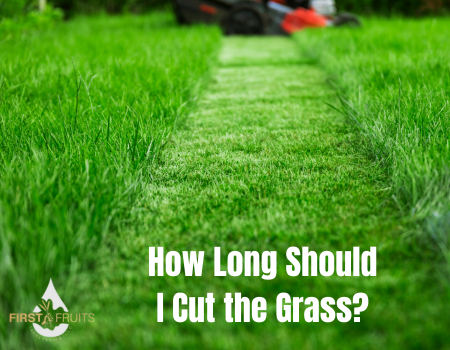Cutting the grass is one of the most common maintenance tasks when it comes to landscaping, however, there are still a lot of questions that surround the common task. One of those questions seems simple: how long should you cut the grass? Having the ideal grass length it the easiest way to ensure your lawn stays healthy as well as visually appealing, however, you must be careful because if you cut it too short or let it grow too long, your lawn health will suffer.
What’s the Best Length to Cut the Grass?
There is no one answer for how long you should cut the grass overall as there are different types of grasses that each prefer a specific grass length. For example:
- Cool-Season grasses prefer to be between 2.5-4 inches in length from the base of the root to the top of the cut blade. Popular cool-season grasses include fescue and Kentucky bluegrass.
- Warm-Season grasses on the other hand prefer to be shorter than cool season grasses, thriving if kept between 1-3 inches in height. Bermuda and zoysia are common warm-season grasses.
In the PNW, most lawns are planted and landscaped with cool-season grasses as they thrive best in the cooler rainy climate, however, be sure to do your research if moving to a new home or starting a new landscaping project so you can be sure to cut the grass accordingly.
What Happens if You Cut the Grass is too Short?
While you may be tempted to cut the grass shorter to prolong the longevity of your maintenance efforts, doing so can harm your landscaping. Common problems that are often associated with grass being cut too short include:
- More weeds – weeds love to grow in open spaces that receive ample sunlight, and by cutting the grass too short you are creating the perfect breeding ground for weeds to emerge and take over your lawn.
- Root damage – shorter grass is known to create a weaker root system due to being unable to photosynthesize effectively.
- Stress – shorter grass is more susceptible to both heat and drought, causing it to burn easily in the sunlight. Additionally, shorter grass with weakened roots can’t handle high levels of foot-traffic and you may find your lawn becoming so damaged that higher traffic areas need to be re-seeded.
What Happens if You Cut Grass is too Long?
Just like with cutting the grass too short, letting it grow too long also comes with its own set of challenges. A few common problems you might face if you let your grass grow too long include:
- Pests and diseases – longer grass is the perfect humid and shaded environment for both bugs and fungi to thrive, easily transforming a once thriving lawn into a pest infested and diseased lawn.
- Uneven grass – when letting your grass grow long regularly, you’ll notice that when you mow the area has become lumpy and even patchy in some areas which can create a less than appealing landscape.
- Thatch – long grass can easily create a thick thatch layer. Thatch blocks sunlight and water from effectively reaching the root system.
When it comes to regular lawn maintenance, understanding the ideal length to cut the grass is one of the easiest ways to stay on top of routine maintenance. With a little research and weekly maintenance you can ensure your grass is looking its best, boosting your curb appeal and creating a healthy and thriving lawn. From installing irrigation systems to ensure your lawn is receiving the proper amount of water, or creating a fully customized full landscape design, our team of professional landscapers is here to ensure that your outdoor spaces are ready for summer. Contact us today!

